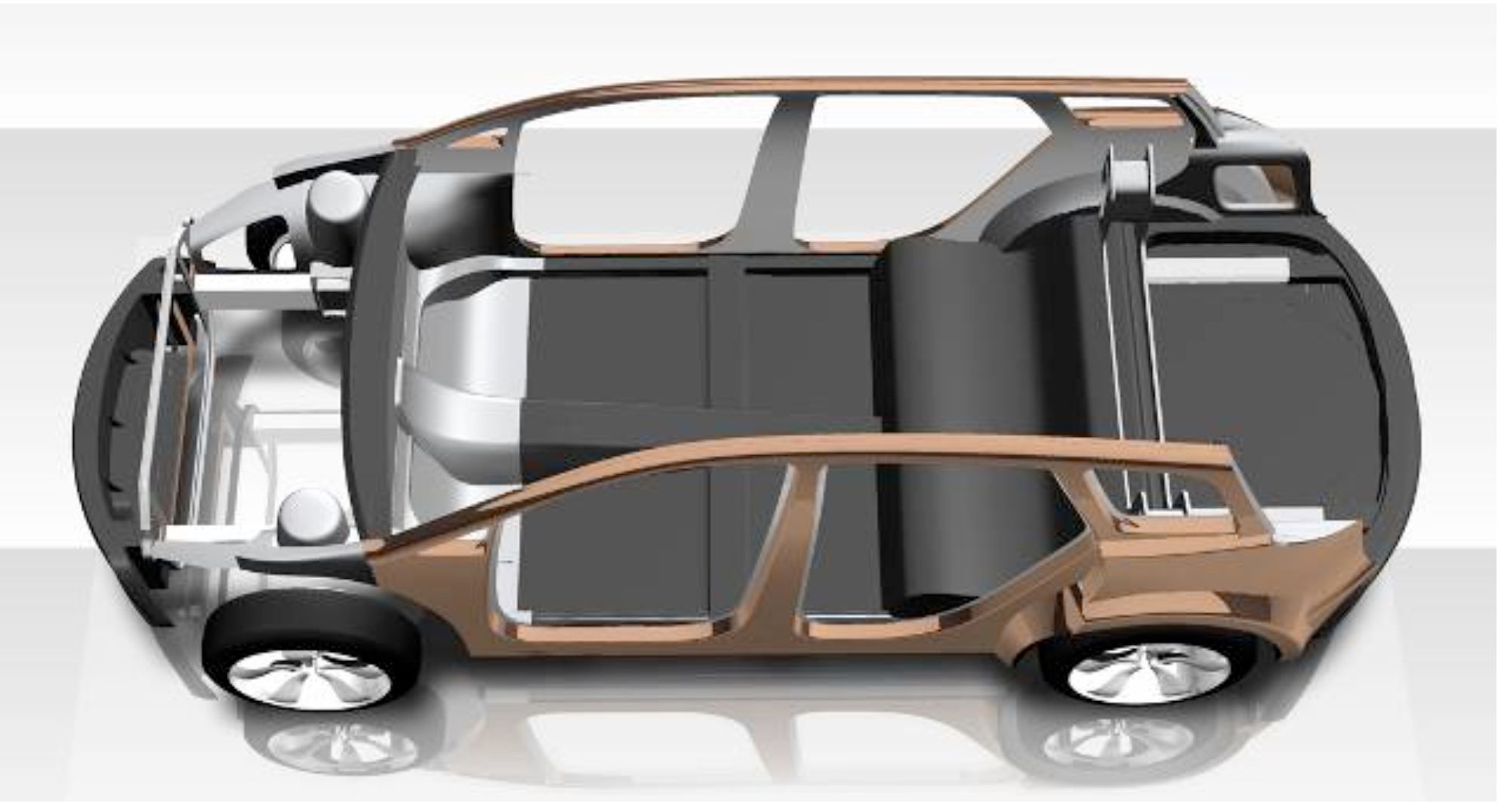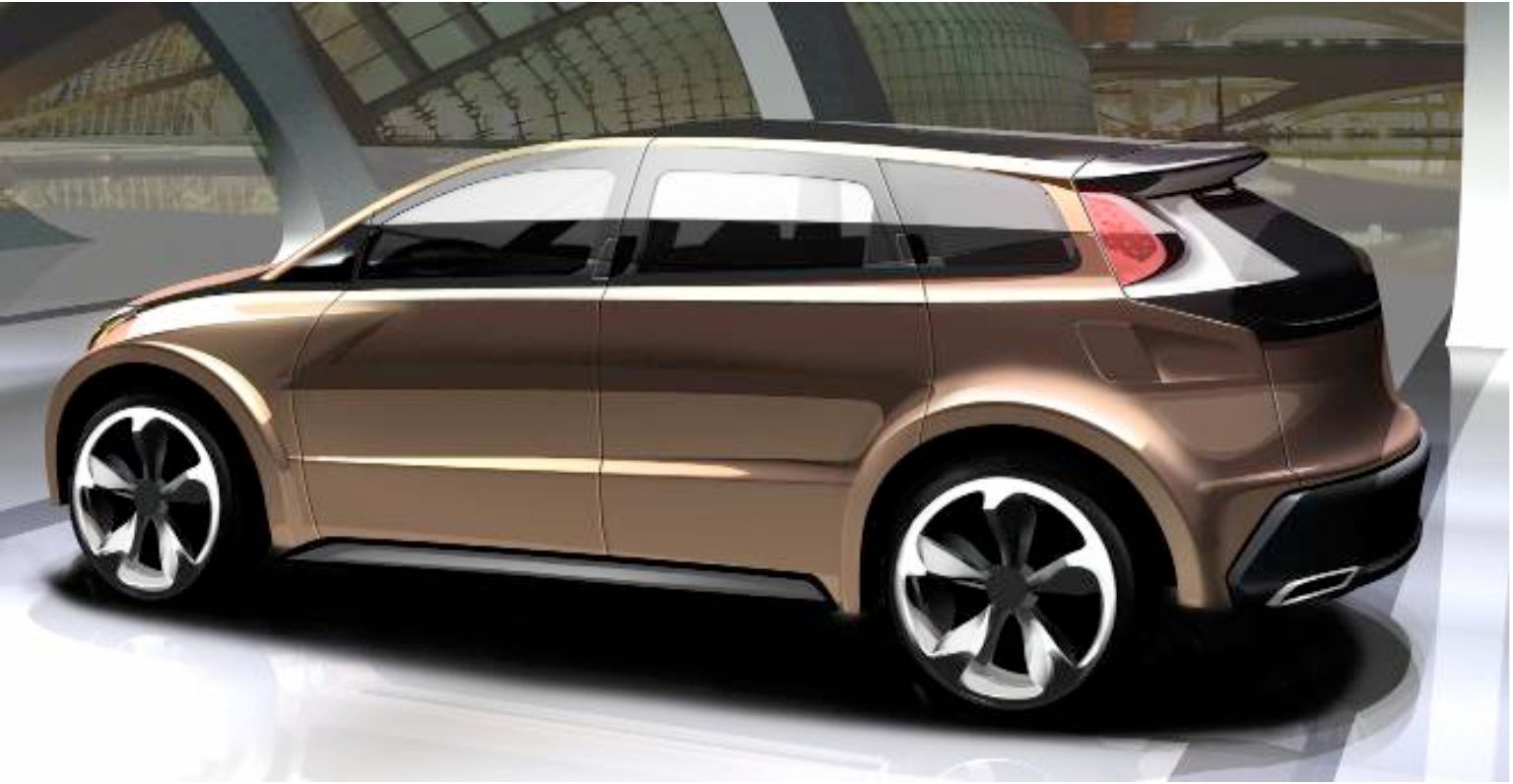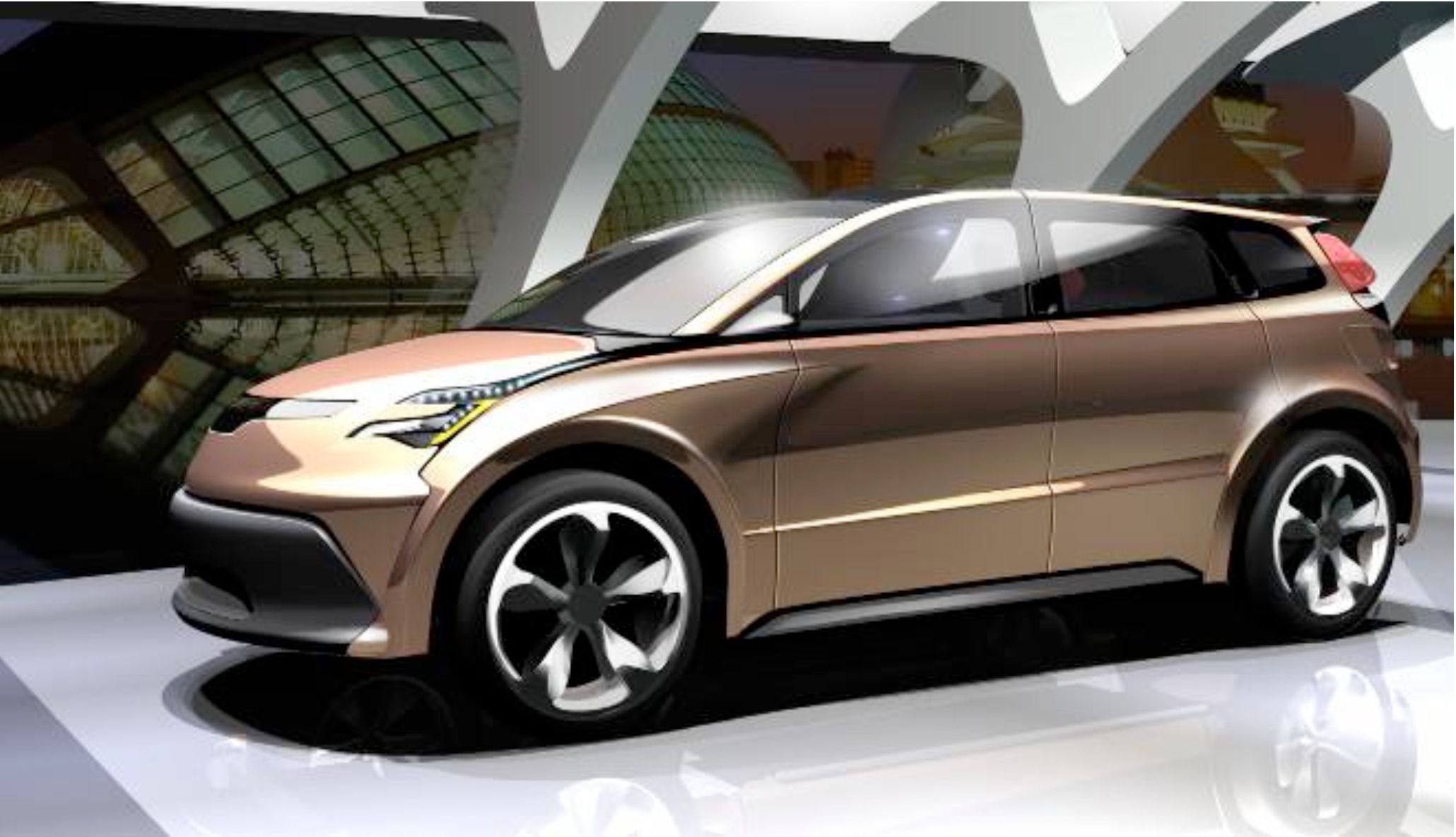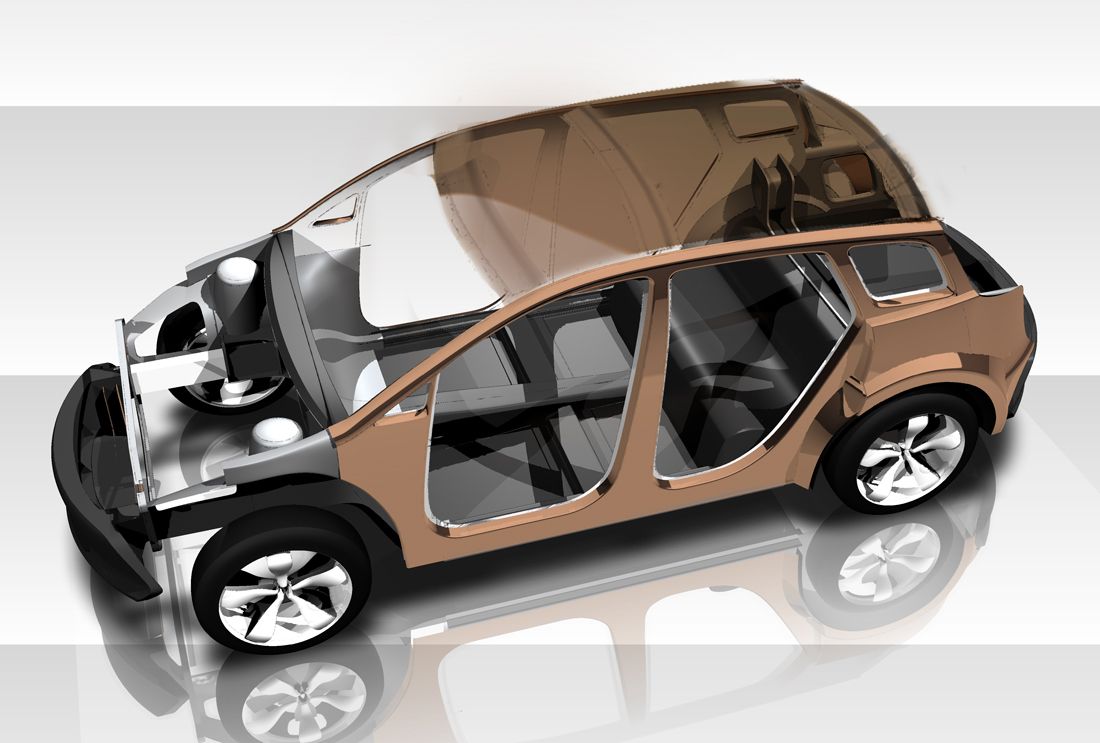What happens when Lotus takes a Toyota Venza and plays around with it for a little while? Let's just say their "playtime" turns into an impressive discovery on how to decrease fuel consumption with minimal cost increase. That's the short side of it anyway. The longer, more detailed story goes a little something like these next few sentences. Lotus Engineering has just finished a study for a 2020 passenger car and the conclusion to that study is this: a 38% reduction in vehicle mass, excluding powertrain, can be achieved for only a 3% increase in component costs using engineering techniques and technologies viable for mainstream production programs by 2020. The study investigated scenarios for two distinct vehicle architectures appropriate for production in 2017 and 2020. The near-term scenario is based on applying industry leading mass reducing technologies, improved materials, and component integration and would be assembled using existing facilities.
A benchmark Toyota Venza was disassembled, analyzed, and weighed to develop a bill of materials and understand component masses. In developing the two low mass concepts, Lotus Engineering employed a total vehicle mass reduction strategy utilizing efficient design, component integration, materials selection, manufacturing and assembly. All key interior and exterior dimensions and volumes were retained for both models and the vehicles were packaged to accommodate key safety and structural dimension and quality targets. The new vehicles retain the vision, sight line, comfort and occupant package of the benchmarked Toyota Venza.
We said it was going to be a long version. Now, Lotus can just hope that other automakers adopt this philosophy of performance through lightweight.
Dr Robert Hentschel, Director of Lotus Engineering said: “Lighter vehicles are cleaner and more efficient. That philosophy has always been core to Lotus’ approach to vehicle engineering and is now more relevant than ever."
Press release after the jump.
2020 Toyota Venza by Lotus
- Make: Array
- Model: 2020 Toyota Venza by Lotus
Press release
Lotus Engineering has conducted a study to develop a commercially viable mass reduction strategy for mainstream passenger vehicles. This study, released by the International Council on Clean Transportation, focused on the use of lightweight materials and efficient design and demonstrated substantial mass savings. When compared with a benchmark Toyota Venza crossover utility vehicle, a 38% reduction in vehicle mass, excluding powertrain, can be achieved for only a 3% increase in component costs using engineering techniques and technologies viable for mainstream production programmes by 2020. The 2020 vehicle architecture utilises a mix of stronger and lighter weight materials, a high degree of component integration and advanced joining and assembly methodologies. Based on U.S. Department of Energy estimates, a total vehicle mass reduction of 33% including powertrain, as demonstrated on the 2020 passenger car model, results in a 23% reduction in fuel consumption. This study highlights how automotive manufacturers can adopt the Lotus philosophy of performance through light weight.
Based on U.S. Department of Energy estimates, a total vehicle mass reduction of 33% including powertrain, as demonstrated on the 2020 passenger car model, results in a 23% reduction in fuel consumption. This study highlights how automotive manufacturers can adopt the Lotus philosophy of performance through light weight.
Dr Robert Hentschel, Director of Lotus Engineering said: “Lighter vehicles are cleaner and more efficient. That philosophy has always been core to Lotus’ approach to vehicle engineering and is now more relevant than ever. Lightweight Architectures and Efficient Performance are just two of our core competencies and we are delighted to have completed this study with input from the National Highway Traffic Safety Administration and the U.S. Environmental Protection Agency to provide direction for future CO2 reductions. We believe that this approach will be commonplace in the industry for the future design of vehicles.” The study investigated scenarios for two distinct vehicle architectures appropriate for production in 2017 and 2020. The near-term scenario is based on applying industry leading mass reducing technologies, improved materials and component integration and would be assembled using existing facilities. The mass reduction for this nearer term vehicle, excluding powertrain, is 21% with an estimated cost saving of 2%.
The study investigated scenarios for two distinct vehicle architectures appropriate for production in 2017 and 2020. The near-term scenario is based on applying industry leading mass reducing technologies, improved materials and component integration and would be assembled using existing facilities. The mass reduction for this nearer term vehicle, excluding powertrain, is 21% with an estimated cost saving of 2%.
A benchmark Toyota Venza was disassembled, analysed and weighed to develop a bill of materials and understand component masses. In developing the two low mass concepts, Lotus Engineering employed a total vehicle mass reduction strategy utilising efficient design, component integration, materials selection, manufacturing and assembly. All key interior and exterior dimensions and volumes were retained for both models and the vehicles were packaged to accommodate key safety and structural dimensional and quality targets. The new vehicles retain the vision, sight line, comfort and occupant package of the benchmarked Toyota Venza.
Darren Somerset, Chief Executive Officer of Lotus Engineering Incorporated, Lotus’ North American engineering division which led the study, said "A highly efficient total vehicle system level architecture was achieved by developing well integrated sub-systems and components, innovative use of materials and process and the application of advanced analytical techniques. Lotus Engineering is at the forefront of the automotive industry’s drive for the reduction in CO2 and other greenhouse gas emissions and this study showcases Lotus Engineering’s expertise and outlines a clear roadmap to cost effective mass efficient vehicle technologies."



